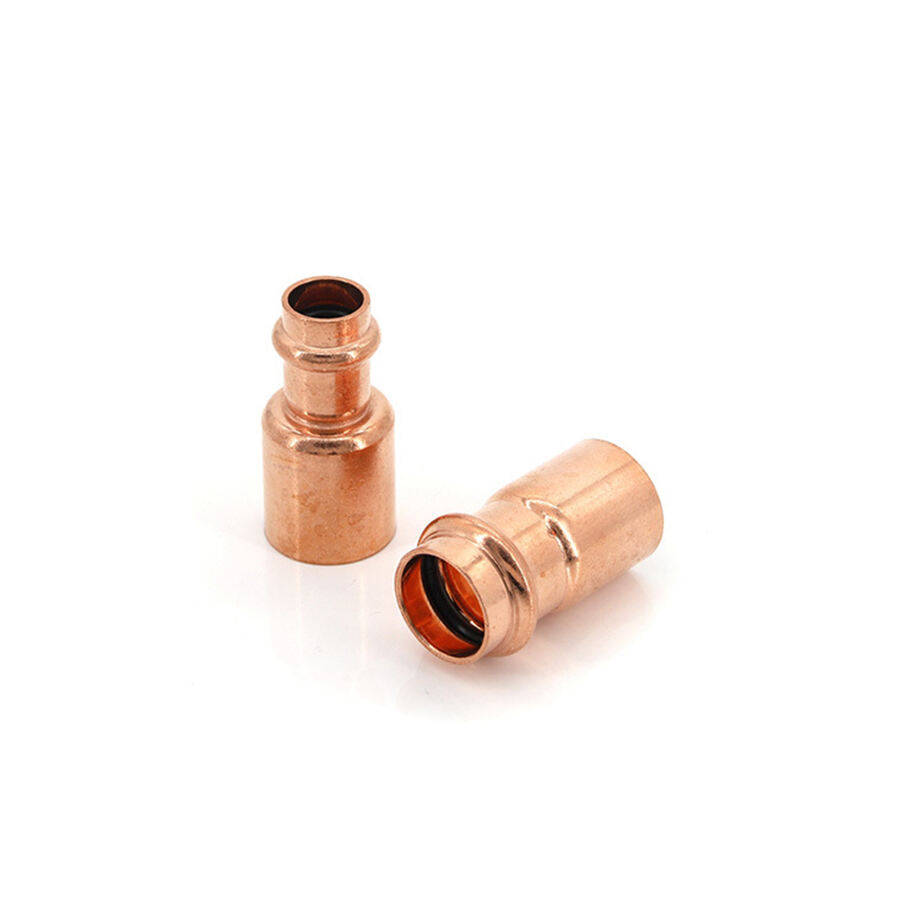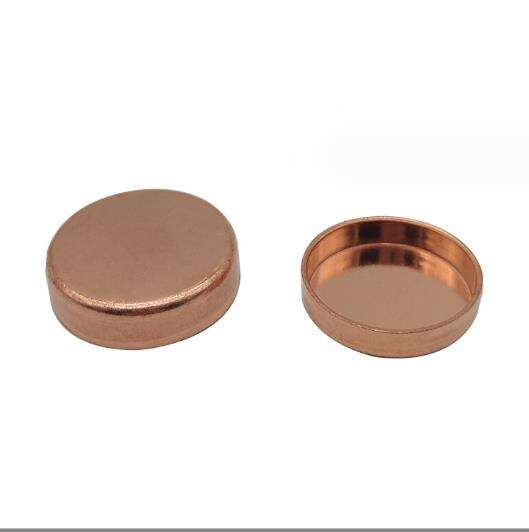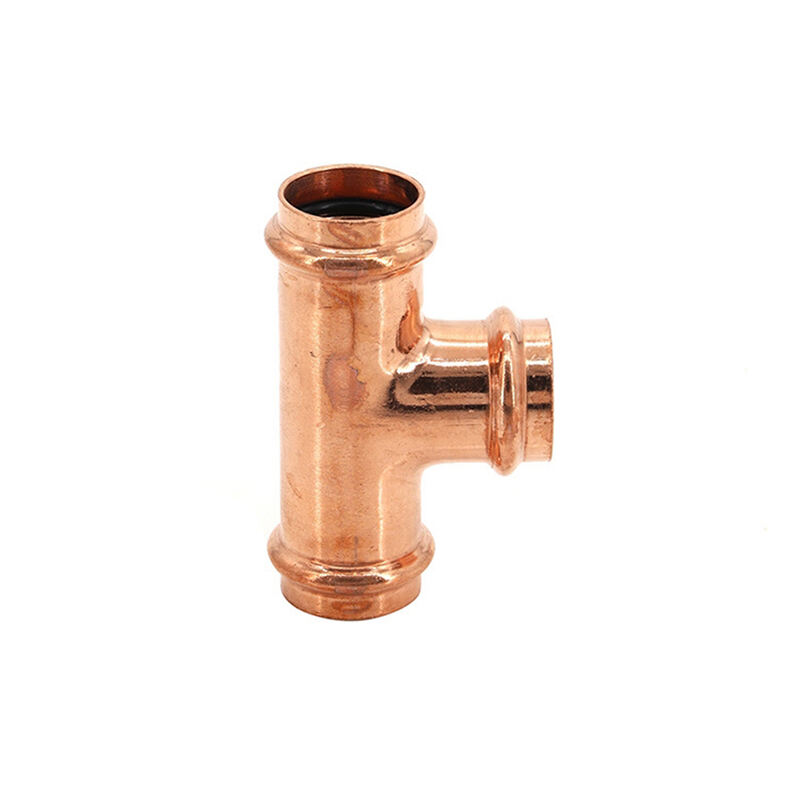Understanding Copper Pipe Joints and Their Importance
Why Copper Pipe Joints Matter in Plumbing Systems
Copper pipe joints play a crucial role in plumbing systems by ensuring a tight, leak-free connection and maintaining system integrity. Their ability to withstand high temperatures and pressures makes them versatile, suitable for both residential and commercial applications. According to extensive research, copper pipes and fittings can last over 50 years, providing long-term reliability compared to other materials. This makes them an invaluable component in modern plumbing, offering both durability and peace of mind for the future.
Key Characteristics of Durable Copper Fittings
Durable copper fittings are defined by several key characteristics that make them ideal for plumbing applications. Firstly, they resist oxidation and corrosion far better than alternatives, offering superior longevity. Copper's natural antimicrobial properties also make these fittings preferable for potable water systems, ensuring safety and hygiene. Furthermore, copper is easily malleable, accommodating high-durability demands in various installations and prolonging system longevity with its adaptable nature. These features underscore why copper is often the material of choice in demanding plumbing environments.
Types of Copper Pipe Joints and Connectors
Soldered Joints: Traditional Sealing Method
Soldered joints have long been the preferred sealing method in plumbing, offering exceptional strength and durability. These joints are well-regarded for their ability to withstand high temperatures, making them ideal for both residential and commercial applications. However, creating a reliable soldered joint requires skill, as the process involves heating the joint to allow the solder to flow evenly into the fitting. It's crucial to note that improperly soldered joints can lead to significant leaks. According to industry statistics, such errors remain a frequent source of plumbing issues, underscoring the necessity for skilled execution of this traditional method. For those keen on more details, the copper fittings can provide additional insights.
Press-Connect Fittings for Modern Installations
Press-connect fittings are increasingly being adopted in modern plumbing due to their straightforward and quick installation process, which removes the need for soldering. These fittings provide a consistent and reliable seal, significantly reducing the potential for leaks. Industry data reveals that press-connect fittings can cut installation time by as much as 50% when compared to soldering. This efficiency makes them an attractive choice for contractors seeking to optimize timelines and maintain reliability. The copper pipe connectors offer further information about these modern solutions and their applications.
Compression and Flare Fittings Explained
Compression fittings are favored for their convenience in allowing quick and reversible connections, making them a versatile choice for various plumbing tasks. They can be easily disassembled and reused, providing added flexibility. Conversely, flare fittings are predominantly used in settings that require an exceptionally robust seal, such as gas and hydraulic systems. It is critical to differentiate between the two to ensure that each is used appropriately based on the specific requirements of a project. To gain more understanding of their use, the brass fittings can serve as a good resource.
Brass vs. Copper Plumbing Fittings: Pros and Cons
The debate between brass and copper plumbing fittings involves considerations of durability, cost, and application. Brass fittings are often chosen for their superior corrosion resistance, making them suitable for specific environments. However, copper fittings offer advantages in being lighter and more accommodating to thermal expansion. When considering costs, brass fittings are typically pricier, but their longevity can justify the expense in demanding applications. Understanding these distinctions helps in choosing the right fitting for different plumbing needs. For further insight, exploring the properties of copper fittings may prove beneficial.
Installation Best Practices for Copper Pipe Connections
Cutting and Deburring Copper Pipe Correctly
Cutting and deburring copper pipes correctly are crucial steps to ensure high-quality connections. Proper cutting techniques result in a clean edge, which is essential for achieving reliable seals. By removing sharp edges and burrs through deburring, you prevent potential damage to the fittings and ensure a snug fit, avoiding leaks. Experts recommend using a reliable pipe cutter to achieve smooth, even cuts and a deburring tool to meticulously finish the pipe's edges, facilitating an easier assembly process. These practices not only improve the efficiency of connecting copper pipes but also contribute to the overall longevity and reliability of the plumbing system.
Proper Flux Application and Soldering Techniques
Applying the right amount of flux and mastering soldering techniques ensures a strong bond in copper pipe connections. Flux plays a critical role, as it facilitates the adhesion of solder and enables it to flow seamlessly into the joints when heated. Achieving a strong bond requires learning the timing and intensity of heating the copper before introducing the solder. According to industry statistics, improperly sealed joints account for nearly 30% of plumbing issues, highlighting the importance of mastering these techniques to prevent future leaks and system failures. Precise control during these steps ensures connections are durable and leak-free.
Ensuring Leak-Free Pressed Joints
Creating leak-free pressed joints requires consistent application of the correct pressure. Uneven pressing can lead to vulnerabilities and leaks, necessitating precision in execution. Regular inspection techniques are vital, helping to identify potential weak points before they escalate into significant issues. Adhering to the manufacturer's guidelines during installation is paramount for achieving durable and efficient connections. These guidelines frequently emphasize correct pressure application and thorough inspections, ensuring pressed joints remain robust and leak-proof. Following these best practices not only enhances the reliability of the plumbing system but also reduces maintenance demands over time.
Maintenance and Troubleshooting Copper Pipe Systems
Identifying Common Issues Like Corrosion and Leaks
Regular maintenance is key in identifying and mitigating common issues in copper pipe systems, such as corrosion and leaks. Corrosion often results from the interaction between the copper and specific water chemistries; hence, understanding the local water composition can help in preemptive measures. For instance, maintaining a pH level between 6.5 and 8.5 can minimize the risk of corrosion. Leaks are frequently detected during routine inspections, emphasizing the importance of continuous monitoring and maintenance. According to statistics, such maintenance practices help identify most leaks before they escalate into significant problems.
Long-Term Care for Copper Pipe Connectors
Ensuring long-term functionality of copper pipe connectors requires regular cleaning and detailed inspections. This practice not only prolongs their lifespan but also maintains system efficiency. Specifically, applying protective coatings can significantly reduce the chance of corrosion, especially in areas with high humidity. Furthermore, understanding local water quality can provide insights into potential threats that might compromise the integrity of copper plumbing systems. Such comprehensive knowledge empowers homeowners and professionals to take proactive steps in safeguarding their systems against unforeseen damages.





